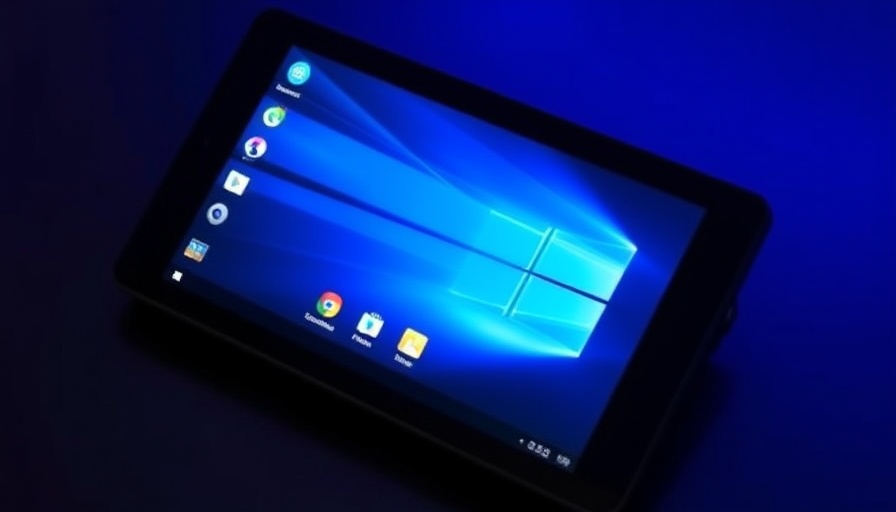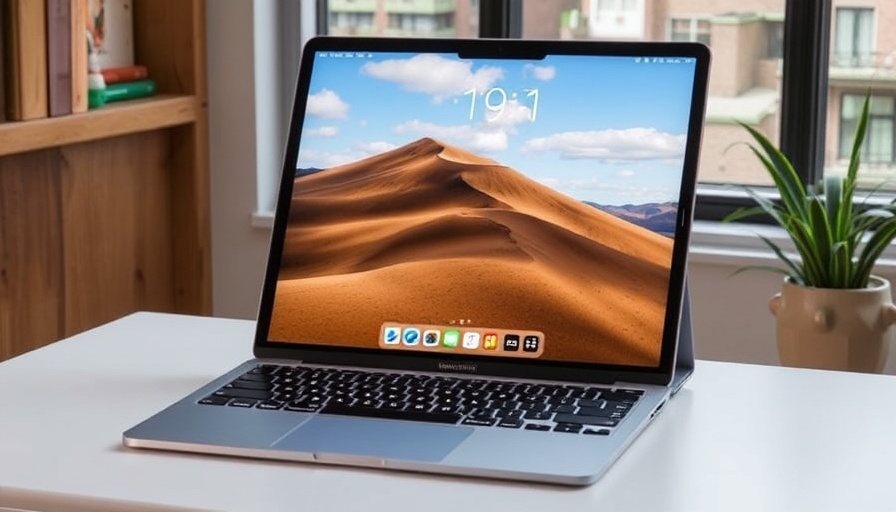
Why Lenovo's SteamOS Handheld is Making Waves in Gaming
As the gaming landscape evolves, Lenovo is stepping into the spotlight with its new handheld device powered by SteamOS. This innovative gadget is drawing attention not just for its hardware specifications but also for its potential to reshape the way gamers connect with their favorite titles on the go. As handheld gaming returns to the fore, enthusiasts are eager to know: is this device worth the hype?
Key Features That Set It Apart
Lenovo's SteamOS handheld boasts impressive specifications that cater to both casual gamers and hardcore enthusiasts. With a sleek design, an ergonomic grip, and a vibrant display, the device is designed for extended gameplay sessions. Notably, the inclusion of a dedicated graphics processor and fast memory allows for smoother gameplay, offering users a satisfying experience similar to traditional consoles.
Comparative Insights: How Does It Stack Up?
In the world of handheld gaming, competition is fierce. Devices like the Nintendo Switch and Steam Deck have set high standards. The Lenovo handheld’s performance can be contrasted with these offerings. While the Switch focuses on family-friendly games and portability, the Steam Deck targets PC gamers looking for versatility. Lenovo appears to be blending these strengths, catering to a wide range of gaming preferences and ensuring that gamers have access to a vast library of Steam titles.
Understanding Your Gaming Needs
When considering a handheld gaming device, it’s crucial to assess your specific needs. Factor in aspects such as screen size, battery life, game library, and personal gaming style. For those who travel frequently or enjoy gaming in various environments, portability combined with a robust performance factor heavily into the purchasing decision. Lenovo's device seems to check many of these boxes, making it an attractive option.
The Emotional Connection to Handheld Gaming
The appeal of portable gaming extends beyond just playability—it taps into nostalgia. Many gamers recall fond memories spent with handheld consoles like the Game Boy or PSP. Lenovo's new offering plays on these sentiments, inviting both new players and seasoned veterans to relive those experiences while enjoying cutting-edge technology.
Solid Performance: Real-World Testing
In practical testing scenarios, the SteamOS handheld demonstrates impressive graphics and responsiveness, making it a worthy contender in the market. Games that demand high processing power run smoothly, while the controls feel intuitive. Players report a seamless transition from console gaming to handheld without sacrificing quality, a crucial factor in maintaining the immersive gaming experience.
Looking Ahead: What This Means for the Future of Gaming
As we look to the future of handheld gaming, Lenovo’s SteamOS device could signify a turning point. With the launch of new hardware, we can expect a ripple effect that challenges competitors to innovate further. This device not only meets current gaming needs but might also pioneer future trends in mobile gaming. Will it influence how major titles are developed and adapted for portable platforms? Only time will tell, but the industry's eyes are firmly set on Lenovo’s lead.
In the end, gamers are left to ponder: will Lenovo's new SteamOS handheld truly usher in a renaissance for mobile gaming or will it simply blend into the rapidly changing sea of gaming options? It certainly shows promise, backed by quality hardware and a commitment to developing engaging gaming experiences.
As you contemplate your next gaming purchase, consider how this Lenovo handheld might fit into your gaming lifestyle. Are you ready to embrace a future that prioritizes portable gaming?
 Add Row
Add Row  Add
Add 




Write A Comment